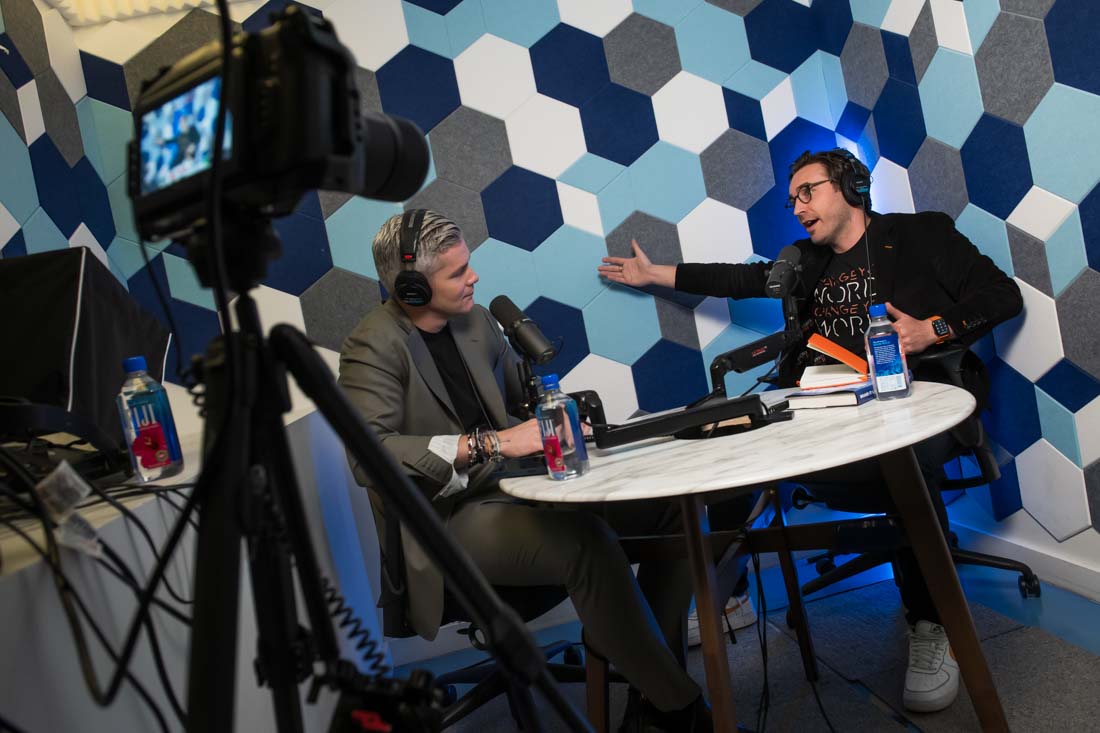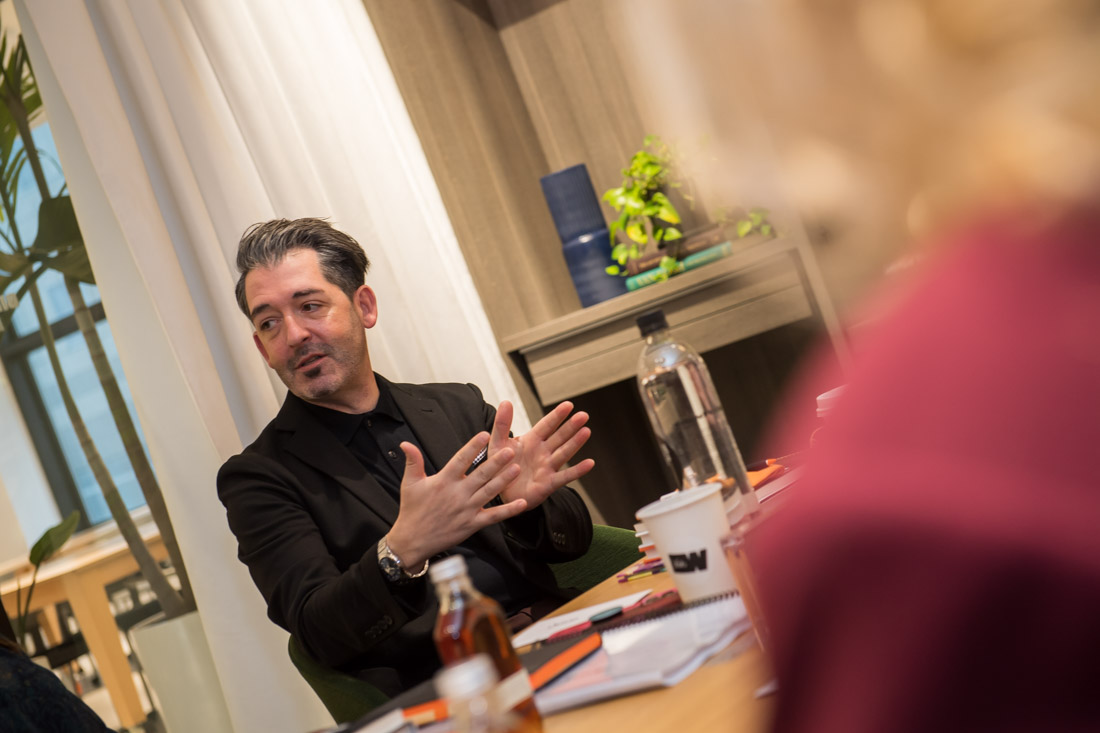John DeMato is a branded lifestyle portrait, virtual, and live event photographer. He collaborates with speakers, trainers, consultants, and other expert-based business owners to create an emotional connection with their audiences through persuasive visual storytelling.
John thinks like a marketer, and he sets his clients up for success way beyond the photo sessions by educating them on how to best leverage their image content across their entire online presence.
John has been working behind the lens for Exactly What to Say, capturing important moments for all of our EWTS Certified Guides. These images have then been used to help elevate their online status and to tell a story through visual storytelling.
Telling your story with photos is very powerful, and can be used to elevate several different professions.
If you want to tell your story through photos, then your aim should be to create impactful imagery and content that helps sell what you do. And the good news is that everyone has the opportunity to do this whether you are a trainer, speaker, or consultant.
What images have you collected over the years? Are you unsure how best to use them?
John’s masterclass is the perfect place to get some ideas of how you can use your visual assets in a useful way.
Your Headshots & Event Photos
How many professional images have you got? Have you ever had headshots taken?
If you haven’t already hired someone to take photos of your events, then you should for the next one that you do.
Have someone in the background to capture the moments that matter and document your unique journey.
Have you already got a catalog of images? If so, what have you done with them? Are you already using them?
Could it be possible that they can help to tell your story?
Using photos from your events and headshots can help you to leverage the emotion that you’re conveying to your audience, in future content.
Visual Punctuation
When you compliment your stories with images that you’re putting out there, it’s a wonderful opportunity to visually punctuate the sentiment of that story.
Think back over your most recent events. What are the types of photos that were captured? Could these photos help you tell a story?
During any session that John attends, he will capture and provide his clients with a variety of different images that can be used to put together a solid portfolio of image content.
His clients can then use the images in a variety of different ways. For example, promotional images, such as headshots and the ‘in the wild’ event photos, can be used for speaker sheets, websites, and printed collateral.
But these types of photos are not just limited to your own content; event organizers that have booked you can also use these images in their marketing.
Your images should illustrate an aspect of how you can support your clients, and use them to further your own professional story too, such as your speaker One Sheet.
Speaker One Sheet
How is your Speaker One Sheet looking? Do you have it perfected, or are you unsure how to create one?
A Speaker One Sheet is essentially your resume of your speaking experience. It is your ultimate piece of marketing collateral to help promote your brand and allow others to see what you have to offer at a glance.
It will be sent to promoters who are looking to book you, and it will be used for your future events.
Here’s John’s advice on the different levels of Speaker One Sheet that you can create.
1
The Bronze
The minimum that you should have is 2 headshots with 2 distinct expressions on your face. This will often be given to organizers to use for their promotional material, so think about what ‘you’ you want to be used.
2
The Silver
A middle ground one sheet will include wider portraits still looking at the camera with 1-2 contrasting emotions. Do not fold your arms in wider portraits. It’s very combative.
3
The Gold
For a full-scope speaker kit, your one sheet will need to have 2 headshots, 2 wider portraits, and a vertical portrait from the mid-thigh to the top of your head. This addition of a vertical portrait will allow promoters to get their designs right without butchering a horizontal shot to make it fit.
Your Online Presence
The more events that you do, the more you get featured on other people’s platforms. Once this starts to increase, more and more material will be created about you.
For every article, event, or podcast, an image will be used of you. And these images are being archived into every single search engine available.
Just imagine your search engine version of you if all you have is one image. This one image is the only photo available publicly to represent you. Could one image manage that?
Can a single photo ever perfectly portray who you are?
If you want to get those pegs in the board and be seen as an authority in your space, using one photo 75,000 times is counter-proactive. The repetition actually has the potential to hinder your progress, and those discovering you online will think of you in a relatively 2-dimensional way.
Who Are You?
If you want to make yourself more interesting online and be seen as multifaceted, then you should decide how you want to be seen.
Write a list of adjectives that you would like people to use when they describe you.
Next, find an image that portrays that.
You can then craft a piece of content to complement that sentiment perfectly.
If you want people to think about you as a collaborator, for example, you can write an article about a collaboration you have been involved in. Then, combine that article with an image projecting that version of you.
It’s that simple.
When that content gets searched and found, your imagery tells your story as much as the written content does.
So, how can you ensure that you have the right images at your disposal? Make sure that you have a plan before you walk into a portrait session.
John uses a technique with his clients before every session. He asks, firstly, what 3 words best represent how you want to be seen? And then, secondly, what 5 words illustrate the aspects of your personality that you want to convey to your audience?
This gives him a focus during the shoot, and he can ensure he captures the right images to be used to illustrate this side of his client’s personas.
What would your list include?
Building Authenticity and Trust
How do you build authenticity and trust through visual storytelling? This is important if you want to be seen as the leading authority in your field.
You have the opportunity to tell powerful stories over various digital platforms, but it’s hard to find the best balance.
What should you share? What should you hold back? Can you ever go too far with your content?
The fact is that you can share a lot of stuff online, but that doesn’t mean that you should.
Most people won’t share absolutely everything. They have a line.
You need to find your line and be intentional and consistent about the things that want to share.
Decide what is the most important.
John shares valuable and relevant content for his business, but he also shares a small amount of his personal family life. It’s just enough to humanize him and show another side, but not too much where it merges into the dreaded overshare.
Ask yourself:
- Is it important?
- Is it valuable?
- Is it relevant?
Your goal as a thought leader is to create content that says come with me, not look at me.
Practical Next Steps
For effective visual punctuation, you need to have the words, thoughts, and intention behind the stories first, then get the images.
Going forward, think about these simple three steps with your visual storytelling:
1
Take visual images and punch them into your Instagram reels in the same way that you’d use a slide in your presentations.
2
Go back to your core business and analyze the imagery used. Do your images match the words? What’s showing up in websites, brochures, and your One Sheet?
3
Play the adjective game – what 10 things do you want people to say about you? Can you craft 10 posts that will illustrate this?










